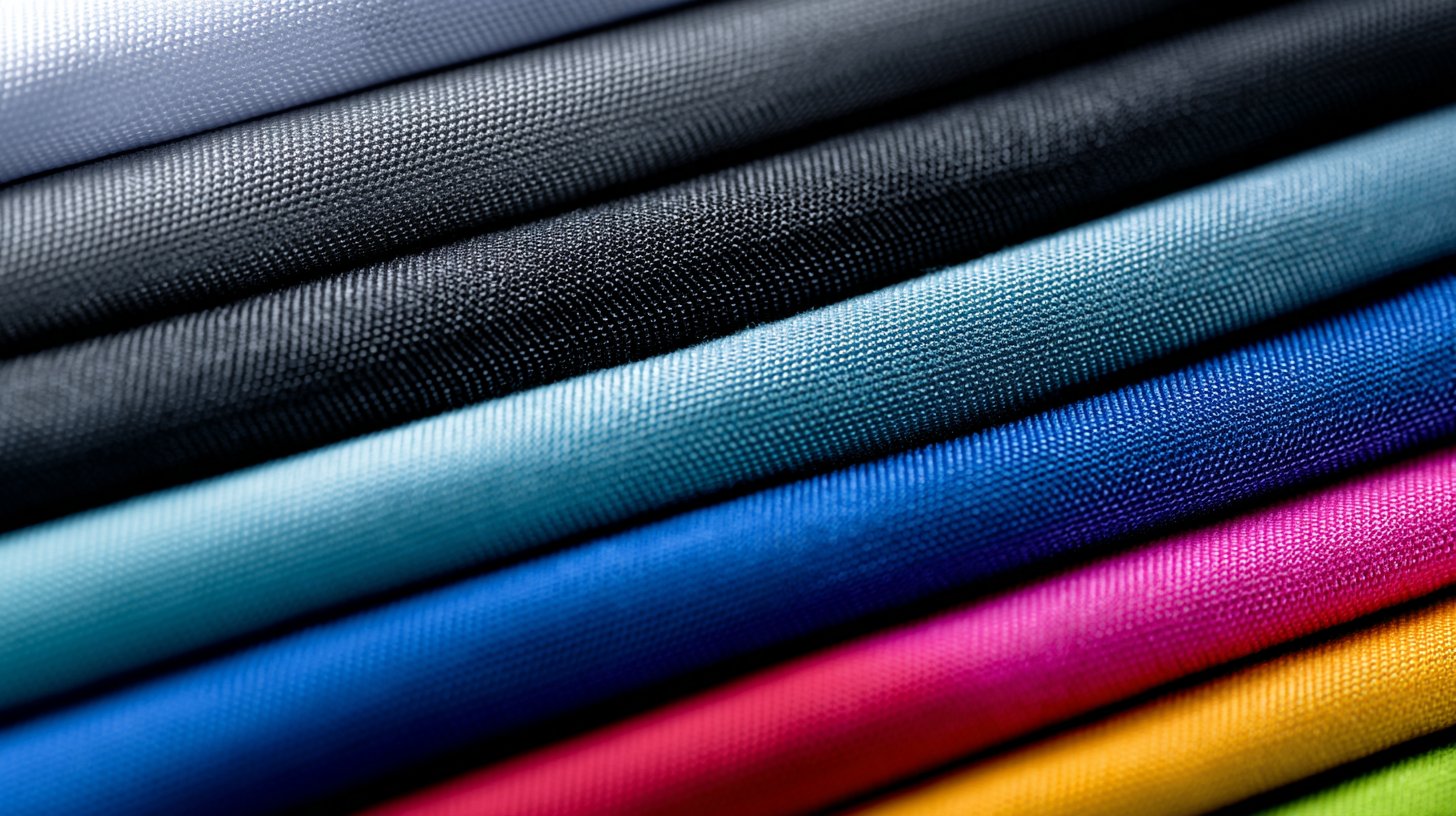- +86 13957580925
- 510515850@qq.com
- adela0928@163.com
The textile industry is undergoing a significant transformation driven by the demand for innovative materials that meet both functional and aesthetic requirements. Among these, stretchable polyester fabric has emerged as a frontrunner due to its unique properties, which include exceptional elasticity, durability, and moisture-wicking capabilities. According to a report by Research and Markets, the global polyester market is projected to reach over $170 billion by 2025, with stretchable variants gaining prominence as manufacturers seek solutions to overcome challenges such as wear and tear, comfort, and versatility in clothing design.

This ultimate guide explores the innovative uses of stretchable polyester fabric across various industries, highlighting its applications in activewear, medical textiles, and fashion, while addressing the pressing challenges faced by manufacturers and consumers alike. As we delve into these advancements, we will uncover how this versatile fabric is not only reshaping traditional textile applications but also paving the way for a more sustainable and resilient future in fabric technology.
The rapid growth of the global activewear and sportswear market, projected to soar from USD 336.28 billion in 2025 to USD 716.66 billion by 2033, underscores the increasing demand for innovative materials that enhance performance and comfort. Among these materials, stretchable polyester fabric has emerged as a game-changer in the activewear industry. Its inherent elasticity allows for greater freedom of movement, making it ideal for various athletic activities. Moreover, advancements such as the integration of nanoparticles with stretchable fabrics are set to revolutionize activewear, providing additional benefits like moisture control, UV protection, and antibacterial properties, thus catering to the diverse needs of athletes and fitness enthusiasts.

The application of nanotechnology in creating smart textiles has paved the way for next-generation activewear that not only performs well during physical exertion but also monitors health metrics. These electronic textiles, or e-textiles, are capable of tracking heart rate, body temperature, and even muscle performance in real-time. This innovation not only appeals to consumers seeking a competitive edge in their fitness journey but also helps in rehabilitation and health management, presenting a holistic approach to wellness in the fast-evolving landscape of sports and activewear. As the industry continues to evolve, the integration of these cutting-edge technologies signifies a promising future for stretchable polyester fabrics in enhancing athletic performance and overall well-being.
Stretchable polyester fabric has revolutionized the sports apparel industry by enhancing both comfort and durability. This innovative material not only offers exceptional elasticity, allowing for a greater range of motion during athletic activities, but it also retains its shape after extensive use. Athletes can now enjoy gear that fits snugly without compromising breathability, making it ideal for various sports, from running to yoga.
When selecting stretchable polyester for sports apparel, consider the following tips. First, look for moisture-wicking properties to keep you dry and comfortable during intense workouts. This feature is essential for ensuring that sweat does not cling to the fabric, which can lead to discomfort and chafing. Second, check the fabric blend; a mixture of polyester with spandex or elastane provides improved stretchability, enhancing overall performance. Lastly, opt for garments with flatlock seams to minimize irritation and rubbing, allowing you to focus solely on your performance.
The role of stretchable polyester in sportswear is pivotal, as it combines functionality with comfort. Manufacturers that prioritize high-quality, stretchable polyester will effectively address industry challenges and meet the evolving demands of athletes.
The integration of advanced stretchable polyester solutions in the medical textiles sector is paving the way for groundbreaking innovations. These smart textiles can detect external stimuli, adapting their properties to meet the changing needs of patients. This adaptability allows for enhanced health monitoring and rehabilitation processes, significantly improving patient outcomes. For instance, garments embedded with sensors can track vital signs in real-time, making it easier for healthcare providers to respond swiftly to any health issues.

When considering the implementation of these technologies, here are a few tips to keep in mind:
By harnessing these tips, the potential of smart electronic textiles in revolutionizing healthcare is immense, driving a convergence of technology and medicine that can lead to better health outcomes for patients.
Sustainable fashion has become a pressing concern in the textile industry, with an increasing demand for materials that minimize environmental impact.
Stretchable polyester fabric stands out as a key player in this transformation. Recent reports indicate that the global sustainable fashion market is projected to grow to USD 8.25 billion by 2023, underscoring the industry's shift towards eco-friendly practices. The adaptability of stretchable polyester not only enhances the comfort and functionality of garments but also supports initiatives aiming to reduce waste through recycling and streamlined production methods.
Furthermore, stretchable polyester is increasingly sourced from recycled materials, significantly cutting down on resource consumption. For instance, recycling one ton of polyester saves approximately 4,000 to 5,000 liters of water, according to the Textile Recycling Association. This innovation aligns with a broader goal to achieve a circular economy in fashion, where materials are repurposed rather than discarded. As brands incorporate stretchable polyester into their collections, they not only meet consumer demand for sustainability but also contribute to a decrease in the carbon footprint associated with textile production.
The demand for protective gear and workwear has skyrocketed as industries increasingly focus on worker safety. In this context, stretchable polyester fabric is emerging as a game-changer. According to a report by Research and Markets, the global protective clothing market is projected to reach $25.6 billion by 2027, driven by stringent safety regulations and the growing need for comfortable workwear. The elasticity of stretchable polyester allows for greater mobility, which is essential in high-risk environments. This innovative fabric ensures that workers can perform their tasks without restriction while maintaining the necessary levels of protection.
Furthermore, the inherent properties of stretchable polyester make it an excellent material for protective gear. It is not only lightweight but also provides durability and resistance to abrasions, chemicals, and even flames. A study published in Textile Research Journal highlights that stretchable polyester blends can achieve up to a 40% increase in tensile strength compared to traditional materials. This ensures that protective clothing can withstand harsh conditions and extends the lifespan of the garments, reducing the need for frequent replacements. As industries continue to prioritize safety, the integration of stretchable polyester in workwear is set to revolutionize protective gear, combining comfort with uncompromised safety standards.
| Application | Features | Benefits | Industry |
|---|---|---|---|
| Firefighter Suits | Heat Resistance, Flexibility | Enhanced Safety, Freedom of Movement | Emergency Services |
| High-Visibility Vests | Reflective Properties, Stretchability | Improved Visibility, Comfort | Construction |
| Industrial Workwear | Durability, Flexibility | Longevity, Ease of Movement | Manufacturing |
| Medical Scrubs | Antimicrobial, Stretchable | Infection Control, Comfort | Healthcare |
| Construction Helmets | Lightweight, Stretchable Liners | Increased Comfort, Enhanced Fit | Construction |
